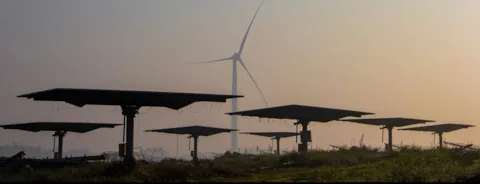Indigenous Led Project Forum 2024
Community engagement and just transition are significant elements of the work done by DNV’s North American ESG team in recent years - a distinct and critical feature of its project due diligence and human rights assessments. Indigenous stakeholder engagement has intensified, with banks and financing entities applying frameworks such as the Equator Principles (EP4) and IFC Performance Standards to address risks and impacts in U.S. and Canada, despite being “Designated Countries” under EP4. This has resulted in a push for more expansive engagement with indigenous communities to scrutinize their level of buy-in. Often, projects with insufficient engagement and community involvement are deemed to be too high risk to invest in.
We recently attended the Indigenous Led Project Forum (ILPF), an eye-opening engagement between Canadian First Nations, policymakers, utilities, and federal, and provincial regulatory and financial bodies. The two-day event was a comprehensive series of panels and discussions covering sectors that underpin the energy and climate transition – critical minerals, utility corridors, renewable energy, and battery storage.
An oft-repeated refrain over the course of the two days was that partners and investors should not rush the process. Aside from consensus building among community members themselves, many communities lack the capacity to quickly process applications and proposals. In many of the communities, the chief and council take on many roles ranging from administrative leadership to social work and other existing challenges. The resources and available time to process applications and interest, fully gauge the project’s implications, and ensure that the communities’ interests are best served, is strained. And once a project starts to produce revenue, the transition of a community “from poverty management to wealth management”, in the words of the Jennifer Ashawasegai-Pereira of the Henvey Inlet First Nation, is also a challenge as communities attain the skills within and outside their communities to manage the revenue to the benefit of the community.
Projects cannot, and should not, be built without the consent and complete buy-in of communities as an exercise of trust between the project partners and the First Nations community. An oft-spoken quote over the two days-- “projects move with the speed of trust” – is a very important consideration for project developers and partners. As investment and policy incentives draw developers, communities are keen to understand what this means for them – in terms of impact, how their voice shapes the project, and what it means for the upliftment of their communities.
In spite of our on-the-ground familiarity with stakeholder engagement, it was a breathtaking experience to witness a clearly articulated expression of what it means to “engage” with First Nations as the energy transition makes its way across their lands. Areas that are well-suited for clean energy, potential transmission lines, and mines are often on, near, or go through First Nations land, and getting community buy-in and involvement is crucial for the success of these projects.
Speakers ranged from chiefs to community members who lead indigenous-run mining and technology companies, work in large utilities like Hydro One and power generators such as Ontario Power Generation (OPG), the Canadian Infrastructure Bank (CIB) and Natural Resources Canada (NRCan). Their message was clear: Indigenous Nations must have a seat in the table, not simply as consulted stakeholders, but more profoundly as equity shareholders and owners of the assets.
One of the more memorable panel discussions featured Hydro One’s Director of Indigenous Relations, Matthew Jackson, who described Hydro One’s past practice of engaging with indigenous communities without consistent principles and policies, often without transparency. Ultimately, the lack of trust between the utility and the communities lost the utility several transmission projects. Now, Hydro One has a First Nations Equity Partnership model for all new transmission line projects over USD 100 million all applicable first nations communities are offered the opportunity to invest and hold 50% equity in the line.
Proposed financing incentives also broadly align with the imperative of First Nations communities investing and developing the projects. For instance, the Canadian Infrastructure Bank (CIB) and the First Nations Bank of Canada created a USD 100 million loan participation programme that would enable First Nations, Metis and Inuit communities to access affordable financing for infrastructure projects. The Province of Ontario has a USD 1 billion loan guarantee programme that supports indigenous communities with acquiring equity in electricity (including renewable and transmission) projects, by guaranteeing and helping finance up to 75% of the share. However, problems with the loan guarantee programs were also pointed out by several speakers and participants, such as the difficulty in getting these financing incentives approved. Some of the workable solutions have come from the project partners who either fronted the equity stake to their indigenous partners who could pay it back in due course (as was the case with Pattern Energy in the Henvey Inlet Wind Farm in the Georgian Bay) or tapping into existing credit lines with banks on behalf of their indigenous partners.
What was infinitely clear was that engagement with indigenous communities is shifting, with the climate and energy transition positioned to be led by the First Nations, Metis, and Inuit communities – a far cry from historic colonial injustices. But it also remains clear that nonindigenous developers and partners, while slowly catching on, are required to understand that this process takes time, patience and -- most importantly – respect. This was best illustrated by Pat Murray of Pattern Energy’s description of the successful engagement with the Henvey Inlet First Nations – show up continuously, listen, understand and work together to bring about a solution. Based on DNV’s experience on assessing IFC Performance Standard 7, which requires project developers to identify and consult with indigenous communities, this is a message that should be heeded in its entirety to de-risk a project no matter its designation; currently, most developers, investors, and offtakers have a long way to go to realize its value.
